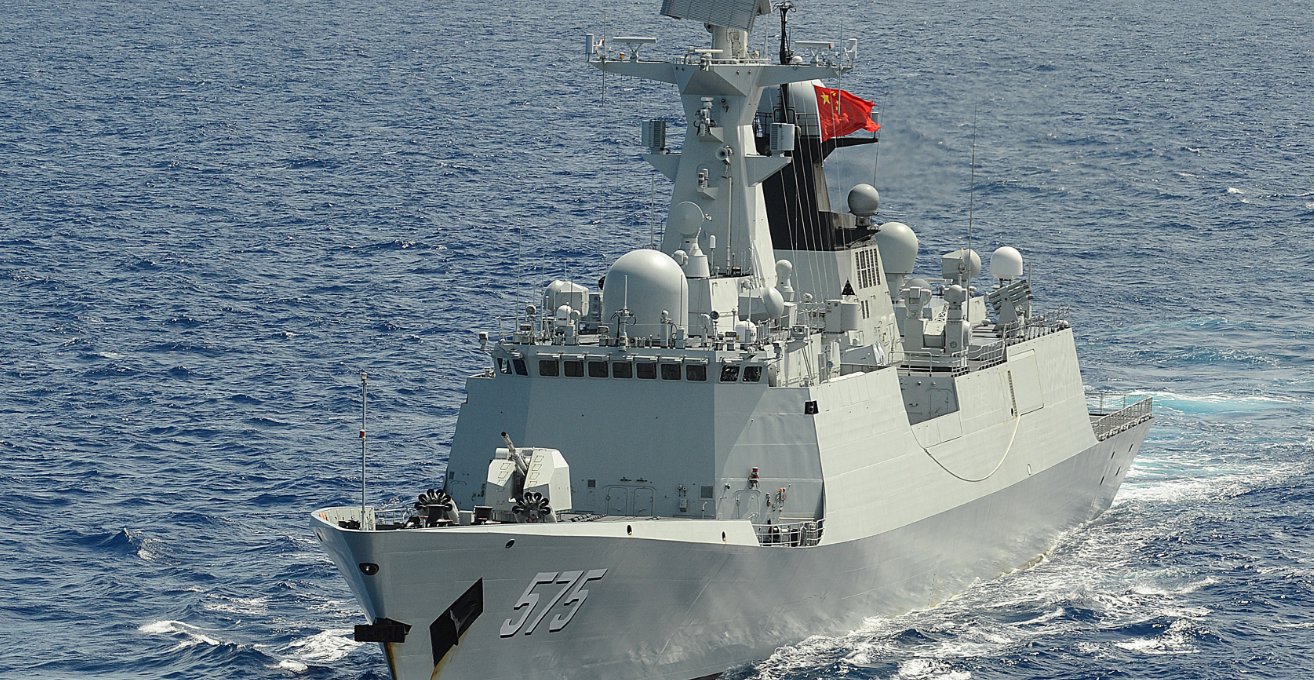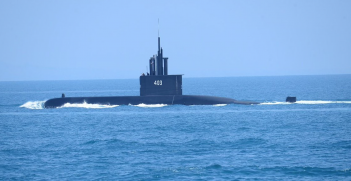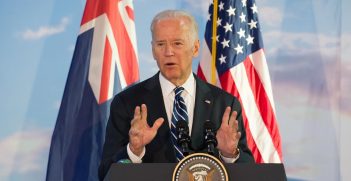Australia, Chinese Warships and the New US Indo-Pacific Strategy

Last weekend, three Chinese warships surprised Australian defence watchers by arriving in Sydney Harbour without prior public announcement. This provoked much debate on social media about how this should be interpreted: a perfectly run-of-the-mill naval operation; a sign of growing maritime cooperation; or an assertive show of maritime strength from the People’s Liberation Army Navy (PLAN)?
While the Australian government knew in April that Chinese warships would visit Sydney, the reasons for the public secrecy around the arrival of a PLAN flotilla to Australian shores are unclear. In any case, it came at a time in which tensions have been ratcheting up in the maritime domain, particularly in the South China Sea.
Recently, after three months travelling across the seas of South and Southeast Asia as part of the Indo-Pacific Endeavour, this Australian Royal Navy activity — comprising the Army, Navy and Air Force travelling as part of naval fleet — garnered significant media attention as it was revealed that during its transit through the South China Sea, the flagship HMAS Canberra was trailed by Chinese warships. Much has also been made of Euan Graham’s report that Australia’s helicopter pilots had lasers pointed at them from passing fishing vessels during this same naval deployment.
In 2018, in August, a US destroyer nearly collided with a Chinese warship. In September, a Chinese destroyer came close to bunting a US warship. These near collisions were condemned by Australian Defence Minister Christopher Pyne as “aggressive tactics” that were “destabilising and potentially dangerous.” In December, China warned other states that it would take “necessary measures” to defend its sovereignty after two incidents in a week involving US warships sailing near disputed waters. In early 2019, the Philippines has protested the presence of nearly 300 Chinese vessels around Philippine-occupied Thitu — or Pag-asa — Island in the Spratlys.
In response to these dynamics, the US Trump Administration began conducting Freedom of Navigation Operations (FONOPs) more regularly. In February 2019, the United States Navy conducted the Trump Administration’s tenth known Freedom of Navigation Operation (FONOP) within 12 nautical miles of Mischief Reef in the Spratly Islands. More recently, a group of US legislators sought to reintroduce the South China Sea and East China Sea Sanctions Act aimed at Chinese individuals and corporations, linking disagreements over international law of the sea and its so-called “trade war” with Beijing.
These events also come at a time in which rhetoric around the South China Sea has also intensified.
During the Shangri-La Dialogue, also taking place over the weekend, Chinese Defence Minister General Wei Fenghe was uncompromising on Taiwan and the South China Sea. This was the first time since 2011 that China has sent a defense minister to the annual IISS event, and his feisty speech upended expectations that PRC officials might use the forum to strike a conciliatory tone. The PRC conceptualises the Taiwan and the South China Sea as “vital national interests,” meaning that it is prepared to risk conflict to defend its claims. General Wei used the forum to announce that “should anyone risk crossing the bottom line, the PLA will resolutely take action and defeat all enemies.”
In contrast, US Acting Secretary of Defense Pat Shanahan struck a more measured tone at the Dialogue, calling out China’s assertive actions in the maritime domain without directly naming it. While Acting Secretary Shanahan was light on details about how the US would enact its approach to the Indo-Pacific, during his speech, the US Department of Defense released its long-awaited “Indo-Pacific Strategy Report.”
This shed light on US perceptions of the PRC as a revisionist power that seeks to “reorder the region.” The Indo-Pacific Strategy is essentially the US plan for containing the rise of China’s regional power. It emphasised the importance of “networked security architecture to uphold the international rules-based order,” and outlined US expectations that allies and partners will contribute to regional security on a number of fronts, including through adequately resourcing their own defence, strengthening interoperability with the US, promoting Indo-Pacific initiatives, and upholding the so-called “rules-based order,” with a specific emphasis on the “freedom of the seas.”
For Australia, one of the important features of this strategy was its clear emphasis on how the US sees its bilateral alliances in the region. At its heart, the Indo-Pacific strategy report highlighted the role of “mutually beneficial alliances and partnerships” in “providing a durable, asymmetric strategic advantage that no competitor or rival can match.” To that end, the report encourages new forms of cooperation, new defence arrangements and joint activities, including maritime training, exercises and operations. The relationships between the US and its allies and partners has been a fixation of the Trump administration. As former Minister for Defense Jim Mattis once said, “[the] US offers strategic partnerships, not strategic dependence.” For Australia, this ongoing focus on the responsibilities of allies in shoring up defence spending capabilities may have future implications for its burden-sharing responsibilities as a US ally.
On the maritime front, the Indo-Pacific strategy report also highlights the regional concerns around the PRC’s role in militarising the South China Sea: examples include the use of anti-ship missiles and long range surface-to-air missiles on artificial islands, PLAN hostility to US FONOPS, its developing Anti-Access/Area Denial (A2/AD) capabilities and the use of maritime paramilitary forces for surveillance and intimidation. These activities have alarmed US partners and allies, not just because they point to the increased risk of a classic security spiral in one of the world’s most important sea lines of communication (SLOCs), but because of what these challenges mean for the capacities of maritime rules to ensure order of the seas. For Australia, this suggests it may face renewed pressure to engage in unilateral FONOPs in the South China Sea to challenges China’s excessive maritime claims, an entreaty from the US that Australia has so far resisted.
The report notes that a “negative shift” in the regional balance of power will undermine a Free and Open Indo-Pacific, and that responding to threats requires the US to increase its military capabilities and collaboration with allies and partners.
Yet it appears that the regional power shift is already under way: a key question for Australian policy-makers is whether it is defending a “status quo” order that no longer exists.
Dr Rebecca Strating is a lecturer in Politics in the Department of Politics and Philosophy at La Trobe University. She researches Australian politics and foreign policy, small states and maritime disputes in the Asia-Pacific.
This article is published under a Creative Commons Licence and may be republished with attribution.





